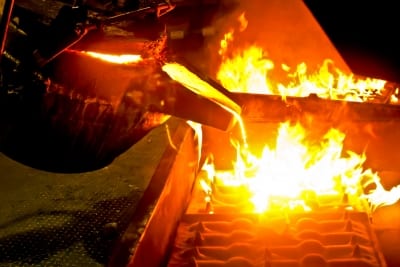The development of lead-free brass alloys has been an important subject of research for the past decade, especially for the casting of water pipe fittings and faucets. This is due to health concerns – international health organizations have set new regulations and standards to restrict lead contamination of tap water, to decrease its toxicity. Pb-free Si brasses are interesting alloys for this application, due to economical aspects and promising properties.
 Generally, the presence of appreciable Pb in brass alloys is necessary for manufacturing and improving casting reliability. Machinability of the brass alloys is improved by adding Pb, which while practically insoluble in copper, is present as discrete short–chipping that clears easily from the tool face. Pb fine dispersions also seal the shrinkage pores in the microstructure, thus enhancing the pressure tightness of the alloy.
Generally, the presence of appreciable Pb in brass alloys is necessary for manufacturing and improving casting reliability. Machinability of the brass alloys is improved by adding Pb, which while practically insoluble in copper, is present as discrete short–chipping that clears easily from the tool face. Pb fine dispersions also seal the shrinkage pores in the microstructure, thus enhancing the pressure tightness of the alloy.
Several trials have been made to decrease or replace this Pb. However most of them were unsatisfying regarding machinability or castability, or they were simply uneconomical. Now, a group of researchers at the Ain-Shams University in Cairo, Egypt, have attempted to develop a lead-free silicon brass alloy – Mohamed A. Taha, Professor of Materials Engineering, and co-workers replaced the Pb by adding Si in different ranges together with aluminum.
With the aid of EDX and X-rays analyses and micro-hardness testing they found that adding a little Si to a base alloy results in a microstructure with finer grains. Increasing the Si, Zn, and Si concentrations resulted in different phases. The variation in a phase’s composition with varying Si addition was also reflected in their micro-hardness, which increases with increasing Si content. The Egyptian researchers also found an increase in fluidity with increasing both Si% and superheat temperatures.
The researchers attested a generally good castability in comparison with other leaded alloys. This is indicated by lower volume fraction of porosity and smaller and pore size, and by better fluidity which increased with increasing Si%.
Image: Kittikun Atsawintarangkul / FreeDigitalPhotos.net

















